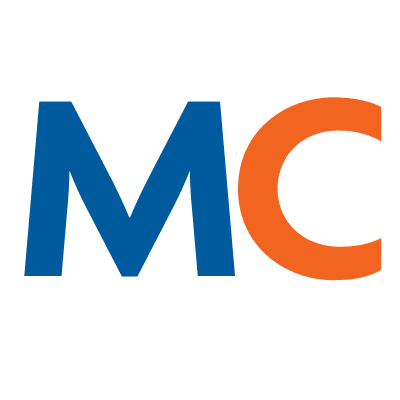- Solutions
- Solutions
- Home Health
- Hospice
- Life Plan Community
- Palliative Care
- Private Duty
- Senior Living
- Skilled Nursing
- Skilled Nursing
- Skilled Nursing Software
- Advanced Insights
- Customer relationship management
- Data and analytics
- Financial & operations management
- Marketing
- Nutrition management
- Referral management
- Regulatory compliance
- Retail management
- Resident engagement
- Revenue cycle management
- Skilled nursing interoperability
- Partners
- Blogs
- Resources
- About

Home health and hospice payments depend on quality coding and documentation
Accurate coding and documentation have always been essential to plans of care and patient outcomes. But in recent years, the home health and hospice industry has undergone major regulatory changes. The patient-driven groupings model (PDGM), complex ICD-10 coding and OASIS-E have all presented significant hurdles for home health and hospice agencies and affect how they get paid.
Common medical coding errors and missing information can result in additional documentation requests (ADRs), rejected or denied claims and delayed reimbursement. They can also increase your risk of takebacks or audits. Protecting the integrity of your documentation is vital for better patient care and proper payment. Here are steps you can take to avoid common pitfalls.
Train intake staff to review documentation
You might be tempted to rely on your clinician’s existing training, but there are good reasons to provide your intake team with more in-depth documentation training. Coding starts at intake and poor documentation is the chief reason for incorrectly coding patients. Training intake staff to properly review referral documentation can reduce coding errors and queries down the line. Common examples of unacceptable documentation include face sheets, lists of codes, codes without narrative and documentation older than 90 days that lacks current physician approval or signature.
Make sure the primary diagnosis is right
Alerting doctors to primary diagnoses that are unacceptable can help reduce coding errors down the line. Unacceptable primary diagnoses include symptom codes like muscle weakness, generalized weakness, fatigue, unsteady gait and ataxia. It’s also important to remember that even though other clinicians can provide some documentation, a doctor must always confirm the diagnoses.
Primary codes can be particularly challenging for home health agencies. These codes must always describe the main reason the patient is receiving home health services. Documentation in the chart and the OASIS assessment must show the patient’s homebound and functional status. This is where assigning valid primary codes can be difficult. Referral sources often don’t provide the agency with the appropriate information to support the need for home health services. The documentation they do provide may also lack codes that are specific enough to assign a valid primary code.
Always be sure to review “see also” notes when assigning primary diagnosis. These notes often provide additional alphabetical index trees that may be useful to determine appropriate codes.
Capture all comorbidities
The comorbidity index is heavily dependent on the specificity of codes. In 2023, the number of diagnoses pairings that lead to a high comorbidity adjustment jumped from 87 to 94. The low comorbidity subgroup jumped from 20 to 23. Some groups, like musculoskeletal one and respiratory nine, were removed. Other groups, including circulatory two, gastrointestinal one, neoplasm six, neurological 12 and respiratory 10 (this is where COVID lies) were added.
It’s important to capture all active diagnoses and all comorbidities to ensure your payment will be properly adjusted. Comorbidity calculations can increase your reimbursement as much as 20 percent. Your staff needs to know and understand the ICD-10 codes, including conventions and guidelines, medical terminology and disease processes. And since relevant comorbidities might not be obvious in the documentation you get from the referral source, always make it a point to query even seemingly insignificant diagnoses on claims. They can be critical to your reimbursement.
Get familiar with OASIS-E changes
OASIS-E, launched in January 2023, was the most extensive revision of OASIS to date and has been a major change for home health and hospice agencies. The main goal of the revision is to better standardize data across all post-acute care settings and uniformly collect social determinants of health (SDOH) data to establish quality measures for meaningful, quality care. Driven by the IMPACT Act, questions are standardized to capture information that will lead to more accessible and better care.
One important change (especially for smaller agencies) is that occupational therapists can now complete initial OASIS evaluations; however, there are nearly 30 new questions to complete at the start of care. Many of these are revisions or breakdowns of older questions and don’t entail major changes. Other revisions will take more time for field clinicians to complete. These include the brief interview for mental status (BIMS), the confusion assessment method (CAM) section, and the patient mood or depression assessment, which can take up to nine questions to complete depending on patient responses. Ongoing regulatory education and training is critical for efficient and accurate documentation.
There’s a lot at stake for home health and hospice agencies when it comes to billing, coding and documentation review. Errors and omissions can lead to delayed, denied or rejected claims that can decrease reimbursement. In addition, ongoing regulatory changes from the Centers for Medicare and Medicaid Services (CMS) make it difficult for overstretched home health and hospice clinicians to keep current with changes and CMS guidance — increasing the risk of errors and incomplete documentation.
Partnering with the experts for your medical billing, coding and documentation can help you avoid common errors and pitfalls that could impact your reimbursement:
- Coding staff is certified in home health and hospice coding
- More than 90 percent of our OASIS reviewers are licensed clinicians
- OASIS review staff is certified in both coding and OASIS
Turn to the experts for coding and OASIS review services that can help improve patient outcomes and your bottom line.
Trish Weber
Trish leads Coding Services for the Market Team as Supervisor. She firmly believes that delivering the highest quality product is pivotal in enabling our home health agencies to shine and receive the full reimbursement they rightly deserve. Trish is a Bachelor's-prepared Registered Nurse who embarked on her career as a pediatric ICU nurse. While she also gained experience in labor and delivery, Trish realized early on that her true passion lies with the senior population. Consequently, she has dedicated the majority of her 30-year nursing career to long-term care (LTC) and home health settings. Having spent 14 years in home health, Trish has acquired invaluable insights from the perspective of a field clinician. Furthermore, she has contributed significantly to overseeing the Quality Assessment and Performance Improvement (QAPI) program. Her efforts in the QAPI program were focused on clinician education, resulting in enhanced outcomes, quality measures, and STAR ratings. Trish possesses extensive expertise in ICD-10 coding and the OASIS instrument, holding certifications in both specialties. This comprehensive knowledge and skill set inform her contributions to the coding department, where she strives to foster continuous growth for the team and its services. By working collaboratively, Trish aims to optimize our customers' outcomes, ratings, and reimbursement.
Related Posts



See MatrixCare in action
Start by having a call with one of our experts to see our platform in action.
MatrixCare offers industry-leading software solutions. Thousands of facility-based and home-based care organizations trust us to help them improve efficiency and provide exceptional care.
© 2024 MatrixCare is a registered trademark of MatrixCare. All rights reserved.





